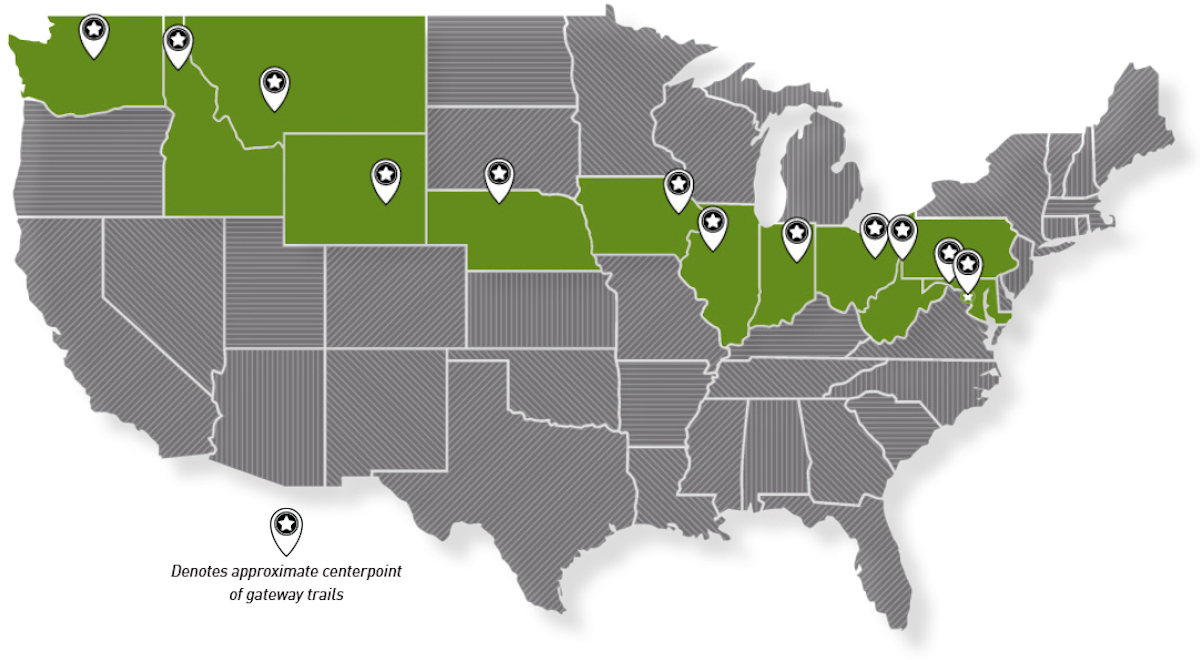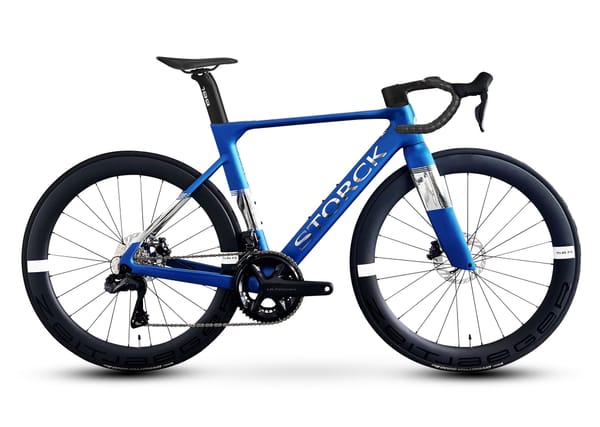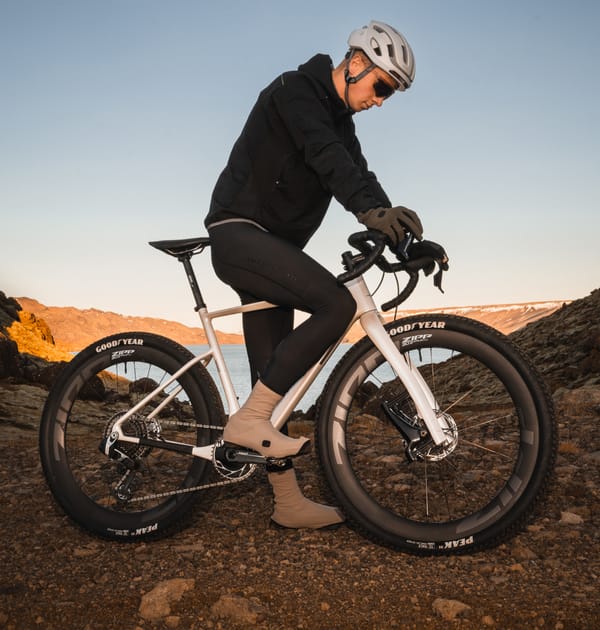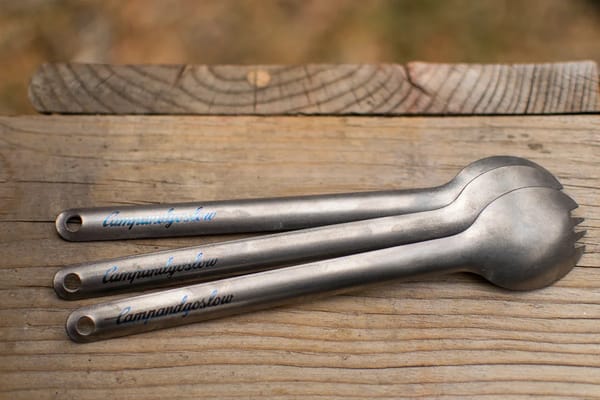How About a Coast-to-Coast 4,000-Mile Rail-to-Trail Bike Route Across the US?
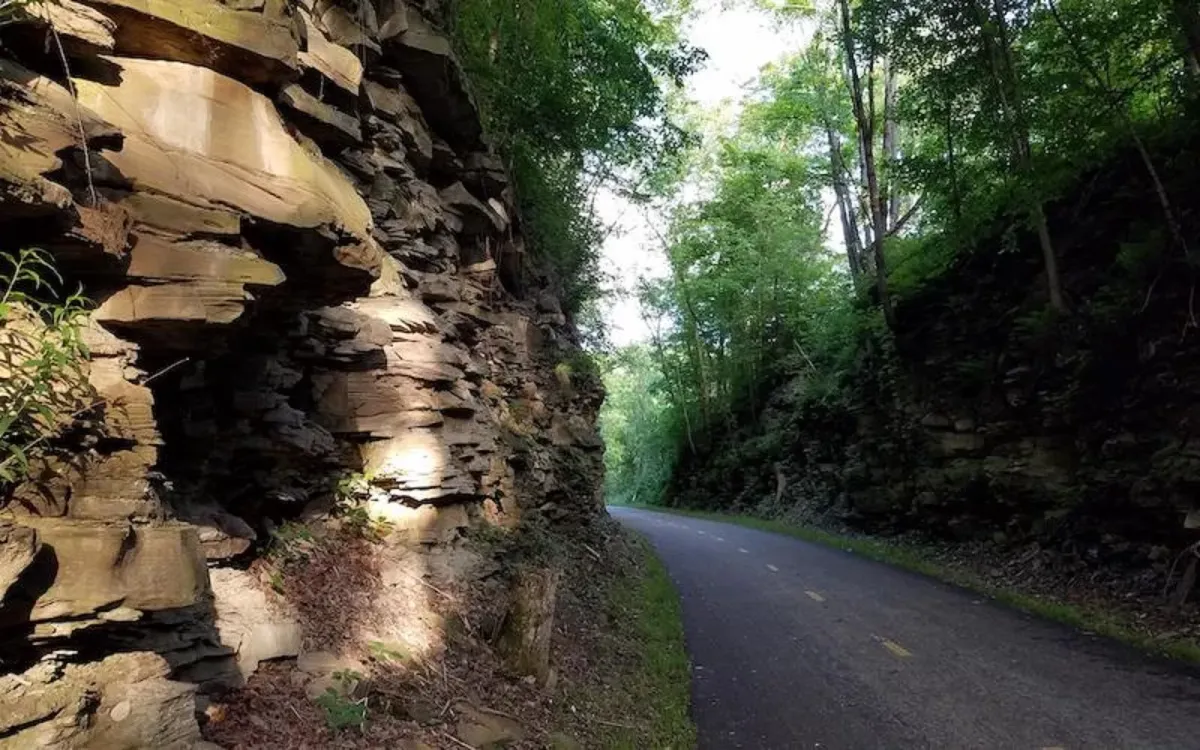
The Rails to Trail Conservancy (RTC) is a nonprofit that works to transform abandoned rail lines into multi-use paths around the country. Based in Washington, DC, where they can help shape policy, they manage an incredible 31,000 miles of trail across the United States.
The RTC is currently planning development of the Great American Rail-Trail (GART), a trail system they’re calling the “single greatest trail project in the history of the United States.”
Last week they unveiled the planned route, a system of trails that interconnect to cover 4,000 miles from Washington state, to Washington, DC.
RTC worked with state agencies and cycling groups to link together 12 existing trail networks to build the foundation of the GART. All told, just over 50 percent of the proposed route would be over existing trails.
The GART will run through 12 states and the proposed route will be a mix of paved pathways and off-road trail sections. A bike tourer with enough time and the right gear could start pedaling at the National Mall in DC, climb the Appalachians, roll through the Midwest and crest the Rockies, before finishing in the pacific northwest. All without sharing a road with cars or trucks. Maybe we’d even see a new coast-to-coast race.
The completion of the GART is years away, but a 4,000-mile coast-to-coast bike trail would be well worth the wait.
When RTC was founded in 1986, just a handful of rail-trails dotted the landscape. Today, there are more than 23,000 miles of rail-trails crisscrossing the countryside and another 8,000 miles of rail-trails ready to be built – making the Great American Rail-Trail viable for the first time. Analyses implemented in the past few years of open rail-trails and out-of-service rail corridors show the potential to build a rail-trail that spans from Washington to Washington. Hundreds of conversations with state agencies and local trail managers confirm that this is a realistic pursuit
Existing trail networks that will be linked to form the GART:
Capital Crescent Trail, Washington, D.C., and Maryland: A start in the nation’s capital offers an exciting kickoff for such an epic and patriotic undertaking. The 11-mile Capital Crescent Trail begins in Georgetown, just a couple of miles from the National Mall with such American treasures as the Lincoln Memorial and Washington Monument. Travelers roll out of the city and into Maryland largely under the cover of a pleasant tree canopy with beautiful glimpses of the Potomac River.
Chesapeake and Ohio Canal National Historical Park, Washington, D.C., and Maryland: Better known as the C&O Canal Towpath, this pathway parallels the Capital Crescent Trail coming out of D.C., tucked between the Potomac River and the historical canal. Totaling nearly 185 miles, the trail offers a peaceful ride to Cumberland, Maryland, with hundreds of original features to see along the way, including canal locks, lock houses, aqueducts and their canal structures.
Panhandle Trail, Pennsylvania, and West Virginia: From just outside of Pittsburgh, the Panhandle Trail heads west, slipping over the border into the northern tip of West Virginia, serving as a literal gateway between the two states. Running adjacent to creeks for much of its 29 miles, the Panhandle carries walkers and bicyclists over many small bridges as it cuts through the rolling and, by turns, rocky hillside.
Ohio to Erie Trail, Ohio: While not quite stretching sea to shining sea, the Ohio to Erie Trail will connect two major waterways: the Ohio River in Cincinnati and Lake Erie in Cleveland. Cutting a diagonal across Ohio, the developing project offers more than 270 miles of trail on the ground already. The Holmes County Trail, one of many gems in the route, is a bucolic beauty known for its use by one of the largest communities of Amish in the country.
Cardinal Greenway, Indiana: Beginning near the Ohio border and heading northwest, the 61-mile pathway is the longest rail-trail in the state and an adventure not to be missed with picturesque rural landscapes, fields of wildflowers, a gorgeously restored depot, several bridges and charming small towns to visit. The trail is also the most recent to join RTC’s Hall of Fame as of summer 2018!
Hennepin Canal Parkway, Illinois: Boasting more than 100 miles of trail, the Hennepin Canal Parkway parallels the early-20th-century canal along which visitors will see many of the old locks and aqueducts. From the Illinois River in the east to the Rock River (and almost the Iowa border) in the west, the pathway offers passage through the varied terrain of northwestern Illinois, including forests, grasslands, marshes and farmland.
Cedar Valley Nature Trail, Iowa: Experience America’s Heartland up close on the Cedar Valley Nature Trail through eastern Iowa. The 52-mile pathway, one of the first rail-trail conversions in the state, follows the beautiful Cedar River through agricultural fields and scenic swaths of prairie and wildflowers, while also connecting the urban centers of Waterloo, Cedar Falls and Cedar Rapids.
Cowboy Recreation and Nature Trail, Nebraska: Nebraska’s Cowboy Trail offers an authentic Old West experience with friendly small towns and sweeping views of the High Plains and pristine prairie. At a whopping 219 miles, it’s already the third longest rail-trail in the country and yet has 100 more miles awaiting future development. With the stunning bridge over the Niobrara River and a wildlife- rich backdrop – including roaming bison, wild turkeys, elk and prairie dogs – this is a bucket-list trail for true adventurers.
Casper Rail Trail, Wyoming: Spanning 6 miles, the Casper Rail Trail is an important connector in one of the largest cities in Wyoming. Cutting east-west across the community, the paved pathway provides access to cultural attractions such as a science center, contemporary art museum, the county library and a park honoring war veterans.
Headwaters Trail System, Montana: The trail connects to Missouri Headwaters State Park, where three rivers meet to form the Missouri River: the Jefferson, Madison and Gallatin. This is Big Sky country, a place where the pioneering expedition of Lewis and Clark trekked during their journey across the country. Offering nearly 12 miles of trail in and adjacent to the City of Three Forks, travelers can take in the scenery of open grasslands, distant mountains, marshlands and river valleys as they follow along portions of the old Milwaukee Road rail corridor.
Trail of the Coeur d’Alenes, Idaho: The Trail of the Coeur d’Alenes, managed by the state of Idaho in partnership with the Coeur d’Alene Tribe, offers one breathtaking vista after another on a nearly 72-mile route across Idaho’s Panhandle. The paved pathway earns its Hall of Fame Rail-Trail reputation as it crosses Lake Coeur d’Alene on the stunning Chatcolet Bridge, traverses the rolling foothills of the Palouse prairie and traces the shoreline of the Coeur d’Alene River.
Palouse to Cascades State Park Trail, Washington: Spanning more than 200 miles across Washington, this pathway is one of the longest rail-trail conversions in the United States. Its eastern end begins at the Idaho border, about an hour south of Spokane, and from there the trail traverses rugged and pristine countryside as it makes its way to the Columbia River. West of the river, travelers will find dense forests, bridges with sweeping vistas and passage through a century-old tunnel at Snoqualmie Pass on a journey to trail’s end in the Cascade foothills, just 35 miles from downtown Seattle.


